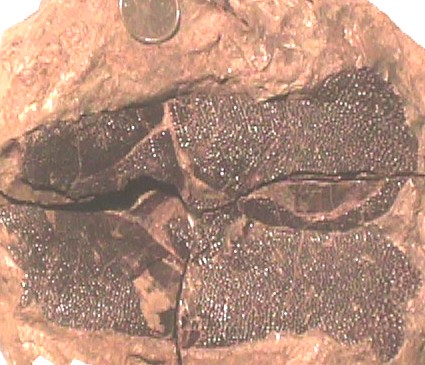![]()
![]()
| Few Silurian placoderms are known apart from some
antiarchs and arthrodires from China, but they show that placoderm diversity
originated long before the Devonian. Antiarchs and arthrodires are anatomically
advanced so the origins of more primitive groups must lay in the Silurian
or earlier. Silurian antiarchi and arthrodire groups survived until the
end of the early Devonian but then became extinct along with many jawless
ostracoderms in China and Euramerica. Some jawed fishes, particularly primitive
relatives of lungfishes also died out at that time.
This extinction at the end of the early Devonian coincided with a dramatic rise in the abundance and diversity of advanced antiarchs. It has been suggested that these fish locally displaced bottom-dwelling ostracoderms and more primitive antiarchs from sandy bottom environments in early Middle Devonian. In Euramerica the Early Devonian marked the final closing of the ancient sea of Iapetus eliminating continental margins in many parts of the world and heightening competition for this diminishing habitat. At the same time, global sea levels fell and along came the advanced antiarchs taking over the ostracoderms benthic turf. During the Middle Devonian global sea levels temporarily rose again flooding more of the continental margins but for many ostracoderms the damage was done. Antiarchs took advantage of the increased availability of shallow benthic environments in parts of Euramerica and Asia. The Middle Devonian extinction of so many ostracoderms and primitive placoderms was definitely not part of a global mass extinction. Most invertebrates were unaffected, although there were some faunal changes. For instance, several coral families became extinct an some new ones appeared at that time. It is not known why the loss of benthic environments and extinction of ostracoderms didnČt have a greater impact on the invertebrate fossil record. The dispersal of advanced antiarchs during the Middle and Late Devonian was global but its impact, measured by extinctions of other benthic fishes was localized, affecting the northern land masses of Euramerica and China more than the southern continent, Gondwana. |

Bothriolepis from Escuminac Bay, Quebec; courtesy of the Canadian Museum of Nature. Photo by Annetta Markussen-Brown
|